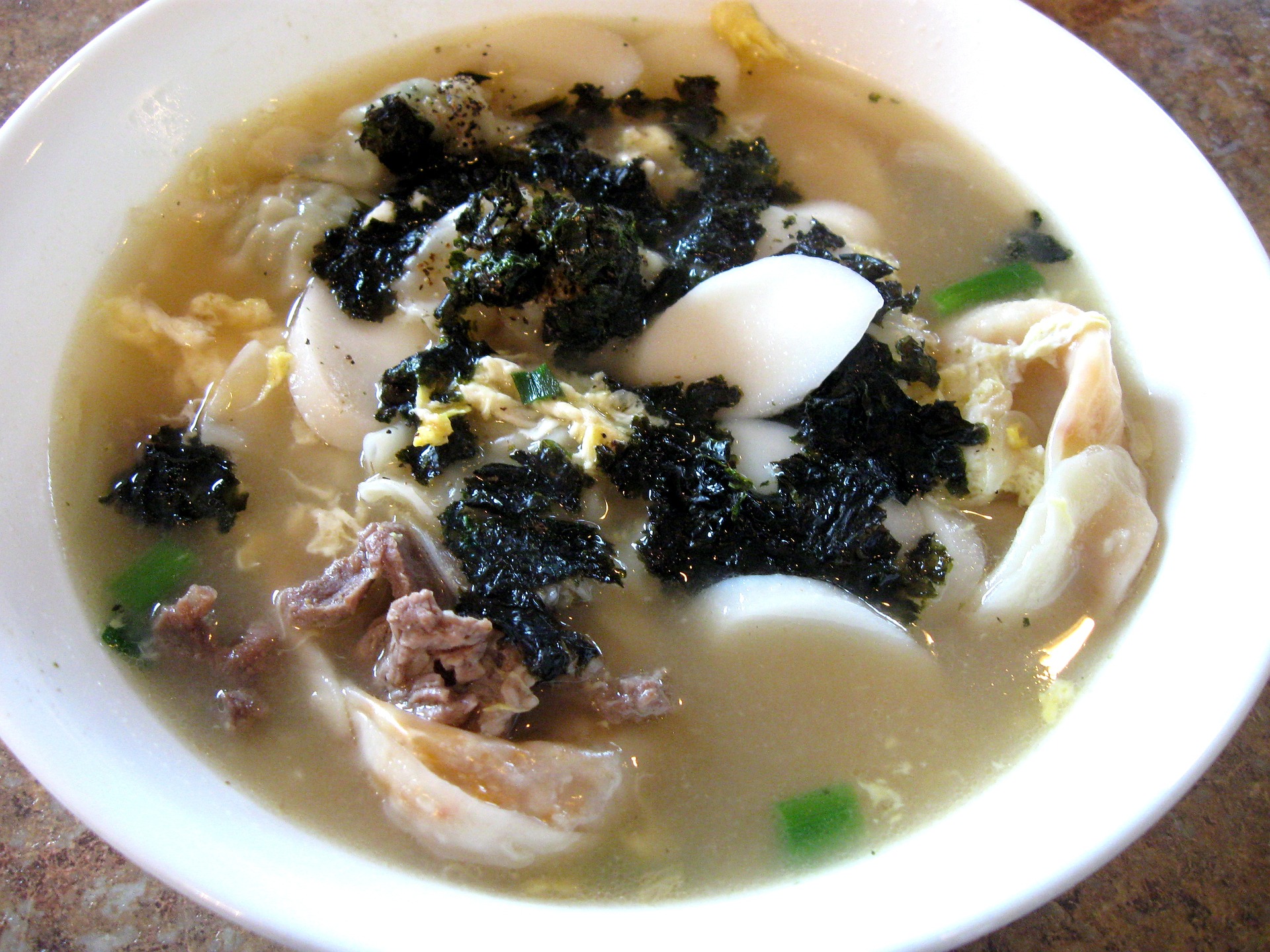The Year of the Rat Posted by Flying Oyster on Jan 28, 2020 in Uncategorized
Koreans have two New Year’s Days, but they only celebrate one. One is called 신정 (shin-jeong: New Year’s Day) and the other is 설날 (Seollal: Korean New Year’s Day), which is same as 구정 (goo-jeong: Lunar New Year’s Day). 설날 falls on a different date each year since it is based on the lunar calendar.
신정 is always on the 1st day of January every year. 제야 ( jae-yah: The New Year’s Eve) 타종행사 ( tah-jong-hang-sah: The Watch Night bell event) is one of the big events on 신정, but Koreans don’t celebrate 신정 as significantly as 구정.
Koreans eat traditional Korean food on 설날
The Traditional 설날 음식 (seollal-eum-sik: Seollal food) is 떡국 (ttuk-gook: sliced rice cake soup). 가래떡 (gah-rae-ttuk: bar rice cake) is a white and long rice cake with barely any flavor. This rice cake is the main ingredient for 떡국. Koreans use 가래떡 for wishing health and wealth. The long shape of 가래떡 symbolizes longevity. Sliced 가래떡looks like coins, which symbolizes wealth. If you think 떡국 is too boring, you can add some 만두 (man-doo: Korean dumplings) in it. 떡만두국 (ttuk-man-doo-gook) is my favorite 설날 음식.
How do Koreans celebrate설날?
When I was young, I remember my parents used to stack up 선물세트 ( seon-mool-sed-tue: gift sets) from many places and in many shapes and sizes. It is a common Korean custom to share gifts among friends and family before 설날 is approaching.
Koreans send a basket of fruits or 한우 ( han-woo: Korean native beef) away to their family. Some employees send a bulk of 선물세트 away to their employees. The most popular items you would see from these 선물세트 are expensive gifts such as 건강식품 ( gun-gang-sik-poom: dietary supplements), 굴비 ( gool-bee: dried yellow corvina) or 꿀 ( kkul: honey).
There are traditional 설날 activities, such as 윳놀이 (yut-nol-ee: a game of yut) , 제기차기 (je-gi-cha-gi) and 연 날리기 (yeon-nal-li-gi). 세배 (se-bae: New Year’s bow) is one of them. Some Korean children are dressed in 한복 and bow to the elders wishing for their longevity. Then the elders give 세뱃돈 (se-bae-don: money for bowing) away to the children.
Koreans go 해돋이 (hae-dot-gi: see the sunrise) trip to wish the best new year or spend time with family and friends. 새해 덕담 (sae-hae-duk-dam: a word of blessing of New Year’s day) is a beautiful tradition. 덕담 is a word of blessing for the best in the coming year, which can be shared among family, friends, and any loved ones. Some Koreans set up new goals for the new year hoping that they don’t get 작심삼일 (jak-sim-sam-ill: a short-lived agenda) which means you have strong will power for only three days.
There are 12 animals representing each year and 2020 is the year of rat. The year of the rat symbolizes abundance and wealth. Do you have any new goals for this year?

Build vocabulary, practice pronunciation, and more with Transparent Language Online. Available anytime, anywhere, on any device.




